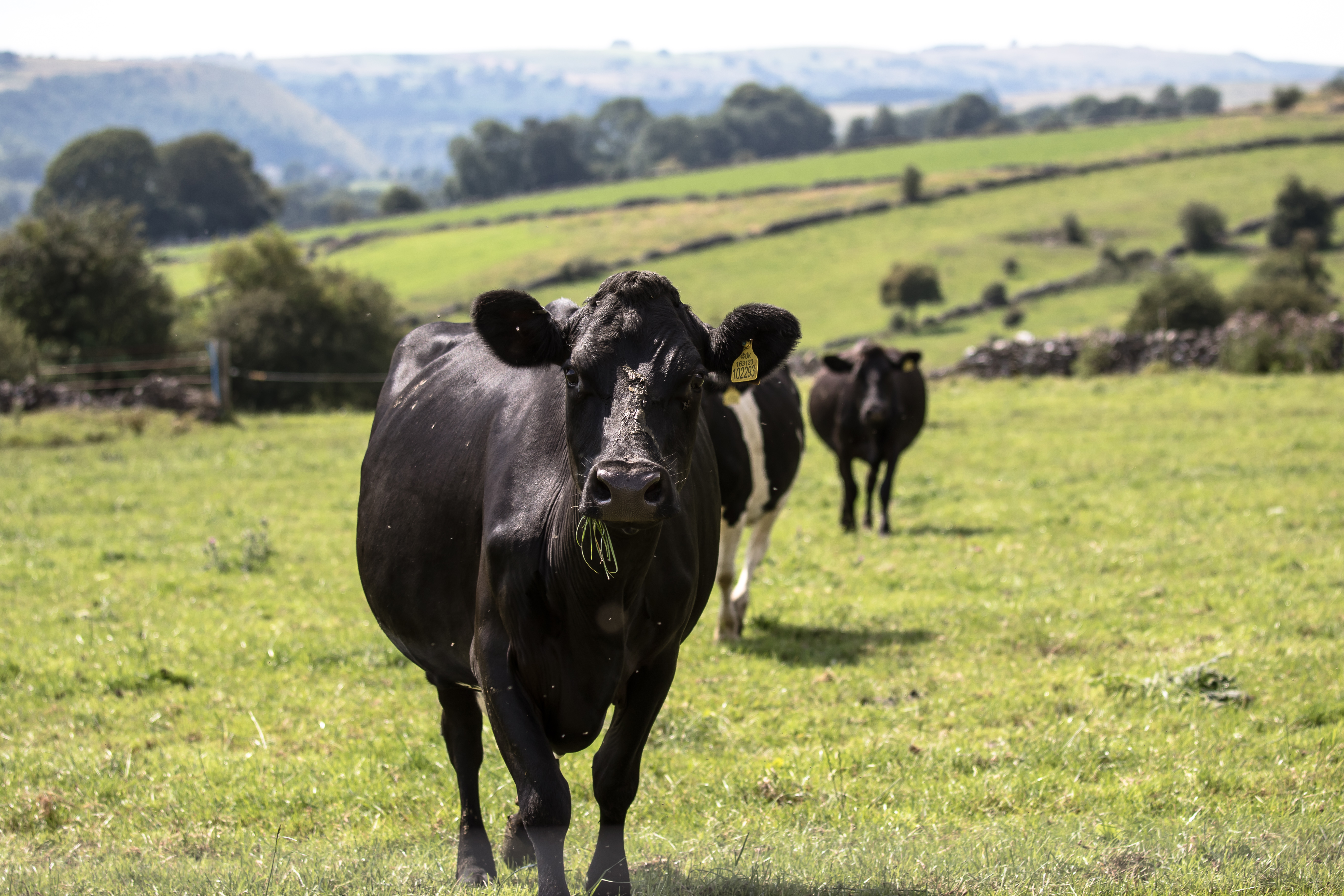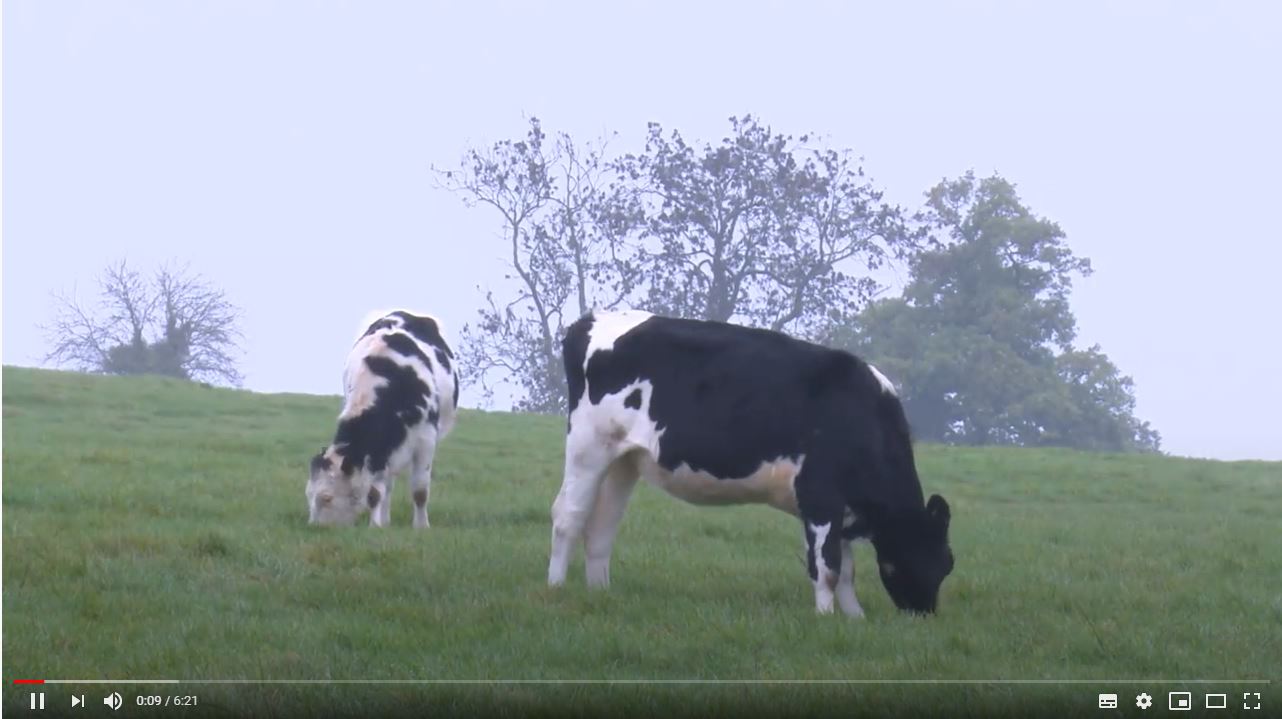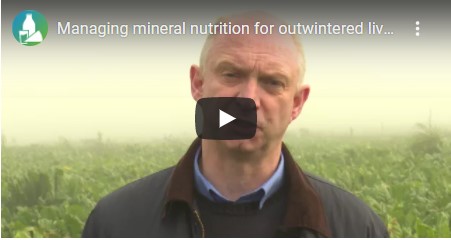- Home
- Knowledge library
- Outwintering for replacement heifers reared for low or high input milk production systems
Outwintering for replacement heifers reared for low or high input milk production systems
Summary
Outwintering is a practice of rearing cattle outside through the winter months on a purpose built outwintering pad, on a sacrifice field or using forages (e.g. fodder beet, kale or swedes) for winter grazing.
- Survey of current practice among farmers
Key messages:
- The top reasons for outwintering heifers were:
- To reduce the cost of heifer rearing
- To improve animal health and welfare
- To reduce labour input
- To alleviate pressure on buildings
- The most popular forages for outwintering heifers were grass (55% of farms), kale (42% of farms), fodder beet (32%) which is generally strip grazed and supplemented with big bales, straw or hay that is placed in a field prior to grazing
- Dairy farmers are choosing free-draining soils to avoid poaching and run-off, and use a back fence and provide a grass run-back/headland area as a dry lying area
- Decisions on the most appropriate forage should be made on soil type and crop yield
- Performance targets are more likely to be met on farms that weigh and monitor animals regularly.
2. The performance of replacement, spring calving dairy heifers out-wintered on deferred grazing, kale or fodder beet on commercial dairy herds, and the influence of a trace mineral bolus
Key messages:
- There is more variation in heifer performance between individual farms than due to the outwintered forage
- Decisions on the most appropriate forage should therefore be made based on soil type and crop yield
- Performance targets are more likely to be met on farms that weigh and monitor animals regularly
- Supplementing with a mineral bolus has a marginal effect on body condition prior to calving, and increases milk fat content in early lactation, especially in herds grazing kale
- There is no effect of outwintering forage type or the use of a mineral bolus when wintered on the health or fertility in first lactation, although there may be a benefit to providing a bolus to heifers grazing kale
- If an appropriate choice of soil type is made for the outwintering field, there is little difference in soil conditions on farms outwintering on grass, kale or fodder beet. Soil compaction increased post-grazing all of the three forage types.
3. Outwintering replacement dairy heifers for high input systems on deferred grazing and fodder beet (1)
Key messages:
- In-calf Holstein heifers can be out-wintered successfully in high output dairy farms with careful planning and management without a negative impact on performance or fertility
- Heifers grazing fodder beet with 35% of dry matter intake as grass silage can obtain target live weight gains in winter conditions, provided allocation of feed is accurate and animal performance is monitored regularly
- Heifers grazing grass with grass silage may have difficulty maintaining body condition score and live weight gain, especially during January and February or if conditions are very wet. In this situation, supplementation with concentrates may be required
- If managed appropriately, outwintering on strip grazed grass fields can be achieved without substantially damaging pasture or reducing the subsequent years grass production
- Feed costs for outwintering on fodder beet or deferred grazing are dependent on crop yield but are approximately 70-80% of housed animals
- The largest financial benefit from outwintering 1-2 year old heifers is the potential savings in capital cost. In total, rearing costs can be reduced by outwintering by approximately 50% or £150/heifer.
4. Outwintering replacement dairy heifers for high input systems on kale or grazed grass (2)
Key messages:
- In-calf Holstein heifers can be outwintered successfully in high output dairy farms with careful planning and management without a negative impact on performance or fertility
- Heifers grazing deferred grazing and kale with additional grass silage can obtain target liveweight gains in winter conditions, provided allocation of feed is accurate and animal performance is monitored regularly
- Heifers may have difficulty maintaining body condition score and live weight gain, particularly during January and February when conditions are very wet and windy
- Supplementation with extra grass silage may therefore be required
- Strip grazing is important so not to damage the crop in the field prior to being presented for grazing. Off-setting the grass silage bales helped with the moving of fences
- Feed costs for out-wintering on kale or deferred grazing are dependent on crop yield but were approximately 45 and 49% less than housed animals.
- The largest financial benefit from outwintering in-calf heifers was the potential savings in capital costs
- The total rearing costs can be reduced over the outwintering period by approximately 64% or up to £178 a heifer.
For more information the report is available.
Downloads
41110026 final report 2013About this project
Aims and Objectives
- Survey of current practice among farmers
- To survey current practice on dairy farms that were outwintering replacement heifers
- To determine best current practice on dairy farms so that this could be transferred to other farms
- To identify areas where farmers would like research conducted.
2. The performance of replacement, spring calving dairy heifers out-wintered on deferred grazing, kale or fodder beet on commercial dairy herds, and the influence of a trace mineral bolus
- To assess the growth and lactation performance and health of 18-24 month old, in-calf crossbred dairy heifers out-wintered on deferred grazing, kale or fodder beet on commercial herds
- To assess the effect of a trace element mineral bolus on winter animal performance and milk production and fertility in first lactation following outwintering.
- To monitor the effect of outwintering on winter soil conditions.
3. Outwintering replacement dairy heifers for high input systems on deferred grazing and fodder beet (1)
- To determine the effects on performance of in-calf Holstein dairy heifers destined for a high output TMR system that were outwinterd on deferred grazing, fodder beet or housed and fed grass silage and concentrate during the winter in the West Midlands
- To compare the rearing cost of each system
4. Outwintering replacement dairy heifers for high input systems on kale or grazed grass (2)
- To determine the suitability for replacement heifers destined for a high input yield ‘intensive’ dairy system of out-wintering on kale or grazed grass compared to housed animals in South West Scotland
- To compare the rearing cost of each system





